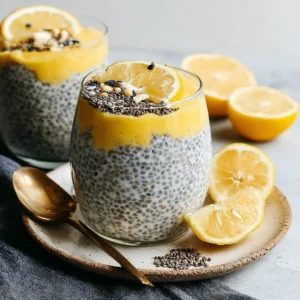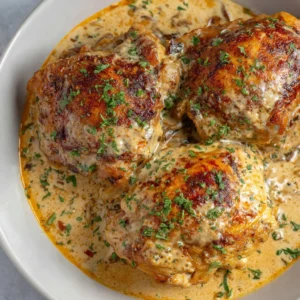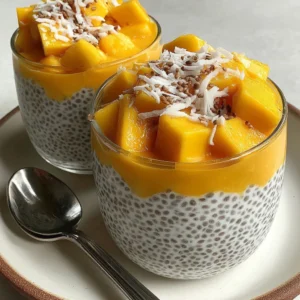If you have ever spent hours baking a perfect batch of cut-out sugar cookies, only to have them ruined by grainy, cracked, or dull icing, then this recipe is your long-awaited rescue. Achieving professional-quality, beautiful, and shiny decorated cookies hinges entirely on mastering the Sugar Cookie Icing. We’re not talking about simple glazes here; we’re talking about the superior, smooth, and structural strength of royal icing made easy and safe using meringue powder.
This recipe for easy-flow royal icing delivers a flawless finish every time. It sets hard enough to stack and ship, dries quickly, and results in a beautiful, high-gloss shine thanks to one secret ingredient. Whether you are aiming for precise holiday decorations, birthday masterpieces, or just a fun afternoon project, understanding the critical difference between outlining consistency and flooding consistency is the key. Stop settling for messy results. Let’s dive into the techniques that will transform your homemade cookies into edible works of art using the best Sugar Cookie Icing recipe you will ever find.
Why You’ll Love This Meringue Powder Icing Recipe
When searching for the perfect topping for your baked treats, you might encounter several types of Sugar Cookie Icing from simple powdered sugar glazes to recipes that use raw egg whites. This meringue powder version stands head and shoulders above the rest, offering unparalleled advantages for the home baker and the professional decorator alike.
Unmatched Stability and Safety
The primary reason to use meringue powder instead of raw egg whites is safety. Meringue powder is pasteurized egg white solids, making it completely safe for consumption without any salmonella risk. This means you can confidently serve your beautifully decorated cookies to guests of all ages, including children and pregnant women, without worry. Beyond safety, the meringue powder provides incredible stability. It introduces protein into the mixture, which strengthens the icing’s structure, allowing it to dry rock-hard without becoming brittle. This structural integrity is essential for achieving smooth surfaces and crisp edges.
Flawless, High-Gloss Finish
Many homemade icings dry matte and dull. Our recipe includes a simple secret ingredient: Light Corn Syrup. This addition is optional but highly recommended. Just one teaspoon of corn syrup dramatically changes the texture, giving the finished, dried Sugar Cookie Icing a gorgeous, professional-grade sheen. This high-gloss finish makes your colors pop and elevates the entire look of your cookie presentation. If you want your decorated cookies to look exactly like those perfect Pinterest images, the corn syrup is non-negotiable.
Furthermore, this meringue powder royal icing is famous for its smooth flow. Once thinned to the proper “flooding consistency,” it self-levels beautifully. This self-leveling action is what eliminates unsightly brushstrokes or bumps, resulting in a perfectly smooth, glass-like top layer on your cookies. If you are struggling with patchy or uneven icing, the flow properties of this specific recipe will solve that problem immediately.
Versatility in Consistency
A great cookie decorator needs at least two consistencies of icing from a single batch: one for outlining and one for filling (flooding). This recipe is engineered to easily transition between these two states. We start by whipping the ingredients into a dense, structural “Stiff Consistency.” From there, dividing the batch and adding small amounts of water allows you to perfectly calibrate both the Outlining Consistency (thicker, for creating boundaries) and the Flooding Consistency (thinner, for filling). This streamlined approach saves time and ensures consistent color matching across your entire cookie batch.
The rapid drying time is another significant benefit. While the time depends slightly on humidity, this royal icing generally sets quickly. You can often pipe a border, flood the center, and come back to add details (like wet-on-wet designs) within minutes. Once fully dry (6–8 hours), the cookies are stackable and ready for packaging, making them ideal for gifting or transporting.
Why You Should Try This Recipe for Cookie Decorating Success
If you’re serious about taking your baking skills to the next level, incorporating this specific recipe for Sugar Cookie Icing into your repertoire is a game-changer. It’s more than just a recipe; it’s a lesson in precision and technique that unlocks endless creative possibilities in the world of cookie decorating.
Mastering the “10-Second Icing” Rule
The core skill of successful cookie decorating is achieving the correct “Flooding Consistency,” often referred to as “10-Second Icing.” This highly specific metric ensures your icing is runny enough to flow smoothly but thick enough to prevent craters or overflow. Many beginners fear thinning their icing too much, resulting in lumpy floods. This guide walks you through the precise steps to hit that 8 to 12-second sweet spot, giving you predictable and stunning results every time. Learning this skill with a reliable base like this meringue powder recipe will boost your confidence immensely.
The meringue powder, unlike some other egg white recipes, provides a forgiving structure. If you accidentally thin it slightly too much, adding a small amount of sifted powdered sugar can quickly bring it back into the perfect range. This resilience makes the process less stressful and more enjoyable.
Achieving Professional Lines and Details
The thick, Stiff Consistency icing we create first is perfect for more than just outlining. This dense icing holds its shape perfectly, making it the ideal medium for creating dimensional elements. Think piped roses, intricate basketweave patterns, or robust borders that give your cookies depth and texture. If you’ve ever admired a cookie with finely detailed script or tiny piped dots that stay sharp, that was achieved using this precise thick consistency.
Once you master separating your icing into the three necessary consistencies (Stiff, Outlining, and Flood), you can layer colors and textures with confidence. For complex designs requiring multiple layers of dried icing, this recipe provides the necessary foundation. The hard set means you can flood a base layer, wait an hour, and then safely pipe delicate lines or dots over the top without the risk of the underlying layer collapsing.
Ready to get started? Grab your stand mixer and prepare to make the ultimate Sugar Cookie Icing that will make your baked goods shine. For more ideas on using your perfectly decorated treats, you might be interested in our guide to festive holiday cookies or perhaps even a recipe for sugar cookie fudge that captures the flavor in a different format.
Ingredients & Necessary Utensils: The Foundation of Perfect Royal Icing
Success with royal icing is about precision. You must measure ingredients exactly and ensure the proper tools are used, particularly when it comes to sifting and mixing. Here is the detailed breakdown of what you need to create the perfect batch of Sugar Cookie Icing.
Essential Ingredients for Flawless Icing
This recipe relies on just five key ingredients, each playing a critical role in stability, texture, and shine. Always use high-quality ingredients, as cheap powdered sugar often contains more starch and can impact the final color and consistency.
| Item | Quantity | Notes on Importance |
|---|---|---|
| Powdered Sugar (Confectioners’ Sugar) | 4 cups | Must be well-sifted. This is the bulk of your icing. Sifting removes lumps and incorporates air, which is vital for a smooth flow. |
| Meringue Powder | 4 tablespoons | Essential for structure, stability, and acting as the binding agent. It replaces raw egg whites for food safety and better whipping volume. |
| Warm Water | 1/2 cup to 3/4 cup | The initial 1/2 cup is for the base; the reserved water is added slowly to achieve the exact desired consistencies (outlining and flooding). Use warm water to help dissolve the sugar and powder faster. |
| Clear Vanilla Extract (or Almond Extract) | 1 teaspoon | Used for flavor. Use clear extract only. Regular vanilla extract has a brown tint that will discolor your white icing. Almond extract offers a classic royal icing flavor. |
| Light Corn Syrup | 1 teaspoon | Optional, but highly recommended for a beautiful, professional shine and to help prevent brittleness and cracking. |
| Gel Food Coloring | As needed | Use concentrated gel colors. Liquid food coloring can destabilize the icing’s consistency quickly, causing it to become too thin. |
In-Depth Ingredient Insight: The Role of Meringue Powder
Meringue powder is arguably the most important ingredient in this Sugar Cookie Icing recipe. It contains dried egg whites, cornstarch, and sometimes stabilizers like cream of tartar. When rehydrated and whipped, the proteins in the egg whites create a robust foam, resulting in the stiff peaks required for outlining. If you are decorating cookies regularly, invest in a good quality brand of meringue powder, as quality can vary significantly. Never attempt to substitute it with fresh egg whites unless you are an experienced candy maker, as the risk and difficulty of achieving stable, safe icing are much higher.
Recommended Tools and Utensils for Success
While you can make royal icing by hand, a powerful mixer is highly recommended to properly incorporate air and achieve the necessary volume and stability. The full 5–7 minutes of whipping required in Step 3 is challenging to replicate by hand.
- Stand Mixer (Highly Recommended): Use the whisk attachment. A stand mixer provides consistent power and frees your hands to monitor the consistency.
- Fine-Mesh Sieve or Sifter: Absolutely essential for sifting the powdered sugar. Skipping this step is the number one cause of lumpy, inconsistent icing.
- Rubber Spatula: Necessary for scraping down the sides of the bowl during mixing and for achieving a uniform color when adding gel dyes.
- Measuring Cups and Spoons: Precision is paramount.
- Airtight Containers: For storing the finished icing and preventing it from hardening.
- Piping Bags and Tips:
- For outlining: Small round tips (Wilton 1 or 2).
- For flooding: Slightly larger round tips (Wilton 3 or 4) or just snipped disposable bags.
Detailed Recipe Steps: Creating the Perfect Icing Consistencies
Follow these steps exactly. Royal icing requires patience and adherence to timing, especially during the whipping stage, to guarantee a smooth, quick-drying finish for your Sugar Cookie Icing.
Step 1: Prepare and Sift the Dry Ingredients
- Measure Exactly: Measure out 4 cups of powdered sugar. Do not scoop directly from the bag; spoon it into your measuring cup and level it off.
- The Critical Sifting Step: Pour the powdered sugar through a fine-mesh sieve directly into a very large mixing bowl (or the bowl of your stand mixer). Do not skip sifting. Any remaining lumps will clog your piping tips later.
- Add Meringue Powder: Add the 4 tablespoons of meringue powder to the sifted sugar.
- Initial Mix: Use a whisk or spatula to gently mix the dry ingredients for about 30 seconds. This ensures the meringue powder is evenly distributed throughout the sugar, which is essential for proper whipping and structure development.
Step 2: Combine Wet Ingredients
- Measure Liquids: In a separate measuring cup, combine the initial 1/2 cup of warm water, 1 teaspoon of clear vanilla (or almond) extract, and 1 teaspoon of light corn syrup (if using).
- Stir Gently: Stir the wet ingredients until they are combined. Using warm water helps the corn syrup and extract integrate fully.
Step 3: Mix the Icing Base (The “Stiff” Consistency)
This stage develops the volume and structure that makes royal icing superior to simple glazes.
- Initial Wet Incorporation: Set your mixer (with the whisk attachment) to the absolute lowest speed. Slowly drizzle the wet mixture into the dry ingredients. Mixing too fast at this stage will create a sugar cloud and incorporate too much air too quickly, leading to instability.
- Whip for Volume: Once all the liquid has been added, increase the mixer speed to medium-low (about 4 on a KitchenAid). Beat continuously for a full 5 to 7 minutes. This extended mixing time is crucial. It activates the meringue powder, incorporates micro-bubbles of air, and develops the strength needed for stacking cookies.
- Check for Stiff Peaks: After 5–7 minutes, the icing should be brilliant white, thick, and opaque. When you lift the whisk, the icing should hold a definite, stiff peak that does not droop. This is your Stiff Consistency. This consistency is too thick for easy outlining but is perfect for dimensional flowers or aggressive details.
Step 4: Check for Outlining Consistency (20–25 Second Icing)
Before moving on to the flood, you need to set aside the portion used for piping borders.
- Reserve the Thick Icing: Scoop out about 1/3 to 1/2 of the stiff icing and place it into a separate, clean bowl. This reserved icing is what you will use for outlining. Cover it tightly with plastic wrap immediately (press the wrap directly onto the surface of the icing) to prevent it from crusting.
- Achieving Outlining Flow: To the reserved thick icing, add water, 1/2 teaspoon at a time, mixing slowly until it reaches the correct consistency for piping borders.
- The Outlining Test: Scoop a small amount onto a plate. Run a knife or a spoon through the icing. The line should slowly merge back together, taking approximately 20 to 25 seconds to completely disappear. If it takes longer, add a tiny drop more water and mix; if it disappears too fast, add a few drops of the stiff icing base.
Step 5: Thin the Icing to Flooding Consistency (The 10-Second Icing)
The remaining icing in the mixing bowl needs to be thinned dramatically for filling in the outlines.
- Initial Thinning: To the large bowl of stiff icing, add 1 full tablespoon of warm water and mix on low speed for 30 seconds.
- Testing the Flow: Lift a spoonful of icing and let it drizzle back into the bowl. Count how long it takes for the drizzle mark (the line you created) to sink completely back into the surface of the icing and disappear.
- Achieving the Goal: The line should disappear completely in 8 to 12 seconds. This is the perfect “10-Second Icing” consistency, which is ideal for smooth flooding without craters.
- Adjusting Consistency:
- Too Thick (>15 seconds): Continue adding water, 1 teaspoon at a time, until the 10-second mark is achieved. Mix thoroughly between additions.
- Too Thin (<8 seconds): If you’ve added too much water and the line disappears instantly, add 1 teaspoon of fresh, sifted powdered sugar at a time to thicken it back up.
Step 6: Color and Bag the Icing
- Divide and Color: Divide your outlining and flooding consistencies into smaller bowls based on the colors you need. Use gel food coloring, adding it with a toothpick, and mixing until the color is consistent. Remember that colors deepen as the Sugar Cookie Icing dries.
- Bagging: Transfer the icing into piping bags. Keep the tips covered with damp paper towels until you are ready to decorate to prevent the icing from drying and clogging the tips.
Tips, Troubleshooting, and Variations for Sugar Cookie Icing
Royal icing can be sensitive, particularly to humidity. Knowing how to handle common issues and adjust the recipe on the fly is essential for mastering cookie decorating.
Troubleshooting Common Royal Icing Mistakes
1. The Icing is Cratering (Holes are forming after drying)
Cratering, or having sunken holes in the middle of your flooded cookies, is the most common issue.
- Why it happens: Your flood consistency is slightly too thin, or you are flooding a very large area without properly settling the icing.
- Fix: When mixing your flood consistency, aim for 10-12 seconds, not 8. After flooding the cookie, gently shake the cookie side-to-side to help the icing settle and remove any trapped air bubbles. Use a scribe or toothpick to pop any bubbles before the icing starts to crust.
2. Color Bleeding
This happens when two different colors touch and, over time, the darker color leeches into the lighter color.
Fix: Never over-mix dark colors. The more you mix concentrated gel colors, the more likely they are to bleed. Also, ensure your base layer is completely dry before piping details on top (ideally 6 hours or more). If you live in a high-humidity environment, consider using a dehydrator or a dehumidified room to speed up the drying process.
3. Clogging in the Piping Bag
Clogging usually means your powdered sugar was not sifted thoroughly, or the icing has crusted over inside the tip.
Fix: Always sift your sugar. If you need to pause decorating, keep the tip of your piping bag covered with a damp cloth or a piece of plastic wrap. If a tip is fully clogged, remove it, rinse it quickly in warm water, and replace it.
For more visual tips and inspiration on decorating techniques using this perfect royal icing, I recommend checking out my Pinterest board dedicated to cookie decorating.
Flavor and Ingredient Variations
While clear vanilla extract is the standard for maintaining white icing, feel free to experiment with flavor to complement your sugar cookies:
- Almond Icing: Use clear almond extract instead of vanilla. This provides the classic, unmistakable flavor of traditional wedding cookies.
- Citrus Zest: Add 1/2 teaspoon of finely grated lemon, orange, or lime zest to the powdered sugar before mixing. This adds a beautiful, subtle tartness that cuts through the sweetness.
- No Corn Syrup Alternative: If you must avoid corn syrup, you can substitute it with 1 teaspoon of clear liquid glucose or clear honey for a similar shine, though honey will slightly alter the flavor. If using neither, your icing will still work perfectly, but the finish will be matte.
Scaling and Storage
This recipe yields a generous amount of Sugar Cookie Icing, suitable for decorating 3-4 dozen medium-sized cookies, depending on the complexity of your designs.
- Storage: Store leftover royal icing in an airtight container at room temperature for up to 3 days, or refrigerated for up to 2 weeks. If refrigerating, let it come back to room temperature and then stir vigorously to recombine the water and sugar that may have separated.
- Reusing: Always give stored icing a thorough, gentle mix before using, even if it was at room temperature. Use a spatula, not a mixer, to avoid incorporating excessive air, which can cause bubbles on your finished cookies.
Nutritional Values and Benefits of Meringue Powder Icing
While Sugar Cookie Icing is fundamentally a sweet treat, understanding its composition helps you appreciate its role in baking. As a confectionery coating, royal icing is calorie-dense, primarily consisting of simple carbohydrates (sugar).
Estimated Nutritional Breakdown (Per 1/4 cup serving of basic icing)
Note: This is an approximation. Values will vary based on the exact density of the final icing, the type of sugar used, and the precise measurements.
| Nutrient | Estimated Value |
|---|---|
| Calories | 150–180 kcal |
| Total Fat | 0 g |
| Protein | 1–2 g |
| Total Carbohydrates | 38–45 g |
| Sugar | 38 g |
If you are looking for other delicious, comforting recipes, be sure to check out our easy chocolate cake recipe or our guide to making creamy white sauce pasta.
Benefits of Key Ingredients
Although royal icing is not a health food, the ingredients used provide stability and safe consumption:
- Meringue Powder (Protein Source): The dried egg whites in meringue powder provide a small but significant source of protein. This protein is essential for the structure and stability of the icing. Because the egg whites are cooked and pasteurized, they are safe, offering a stable matrix that allows the icing to dry completely hard.
- Powdered Sugar (Energy Source): Powdered sugar is a simple carbohydrate that provides a quick energy boost. In baking applications, it serves as the necessary filler and hardening agent. Sifting the sugar not only ensures smoothness but also helps keep the icing structure light.
- Corn Syrup (Moisture Retention): The small amount of corn syrup acts as an invert sugar, helping the icing retain a slight amount of moisture, which prevents the icing from becoming excessively brittle and prone to cracking, especially around the edges. This contributes to the professional look and feel of the finished product.
Frequently Asked Questions About Sugar Cookie Icing
How long does royal icing take to dry completely?
The drying time for Sugar Cookie Icing depends heavily on humidity and temperature. Generally, a thin flooded layer will crust over in 1–2 hours. However, to ensure the cookies are hard enough to stack and package without damage, allow them to dry for a minimum of 6 to 8 hours, or preferably overnight (12+ hours).
Does meringue powder royal icing need to be refrigerated?
No, royal icing made with meringue powder does not require refrigeration. It is shelf-stable and can be stored in an airtight container at room temperature for up to three days. Refrigeration can sometimes introduce too much moisture, which is detrimental to the icing’s stability and consistency.
What is the difference between royal icing and a simple cookie glaze?
Royal icing, like this Sugar Cookie Icing, uses meringue powder (or egg whites) to create a structural, protein-based coating that dries rock-hard and shiny. A simple glaze, conversely, is made only from powdered sugar and liquid (like milk or citrus juice) and dries softer, often resulting in a duller, more prone-to-smudging finish. Royal icing is essential for detailed, professional decorations.
Can I use milk or juice instead of water in this royal icing recipe?
It is strongly recommended to use plain water, preferably warm, when making the base royal icing. Introducing milk (especially dairy) can negatively affect the shelf stability and drying properties of the meringue powder. If you want a hint of flavor, use water in the base and incorporate a clear extract or concentrated citrus oil.
Why did my icing bubble after I flooded the cookies?
Air bubbles in the finished flood layer are usually caused by over-mixing the icing once it is thinned, or by too much air being incorporated during the initial 5-7 minute whip. To prevent this, mix only on low speed after the stiff stage, and after flooding the cookie, gently tap it on the counter a few times to encourage trapped air to rise to the surface where you can pop the bubbles with a toothpick.
Conclusion: Mastering Your Cookie Decorating Goals
The journey to creating breathtakingly beautiful sugar cookies starts and ends with the perfection of your Sugar Cookie Icing. By following this detailed guide and focusing on the crucial techniques sifting the sugar, whipping for stability, and mastering the 10-second flow rule you now possess the knowledge to achieve a professional, shiny, and flawless finish every time. This meringue powder recipe removes the guesswork and risks associated with other methods, providing a reliable foundation for all your decorative endeavors.
Remember that practice makes perfect, especially when learning to gauge the precise consistency for outlining and flooding. Don’t be discouraged if your first batch isn’t flawless; simply adjust the water or sifted sugar until you hit that sweet spot. With patience and this foolproof royal icing recipe, your decorated cookies will soon be the star of every holiday, party, and gathering.
We encourage you to grab your ingredients, turn on your mixer, and transform your cookies into edible art. Once you try this stable, easy-flow royal icing, you’ll never go back to those grainy glazes again. Happy decorating!



